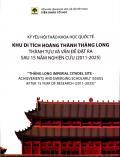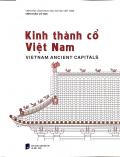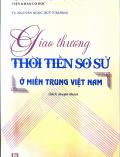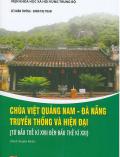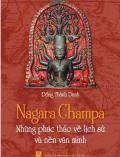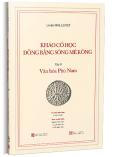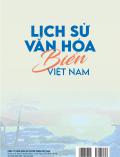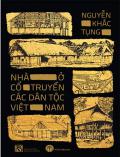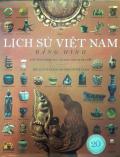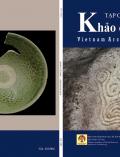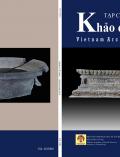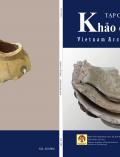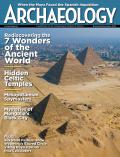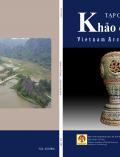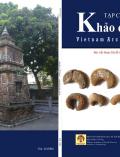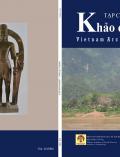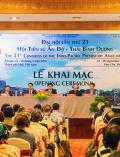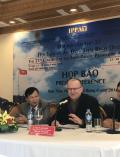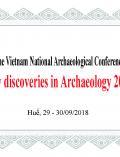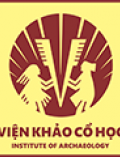Humans, Cultura and Environment During Pleistocene Times in Island of Southeast Asia
Proposed by:
Session Abstract
noerwidi@arkeologijawa.com
antonferdianto18@gmail.com
vida.kusmartono@gmail.com
Sofwan Noerwidi, Muséum national d'Histoire naturelle, France and Balai Arkeologi Yogyakarta, D.I. Yogyakarta, Indonesia
Anton Ferdianto, Balai Arkeologi Bandung, West Java, Indonesia
Vida Pervaya Rusiyanti Kusmartono, ANU, Canberra, Australia and Balai Arkeologi Banjarmasin, South Kalimantan, Indonesia
Anton Ferdianto, Balai Arkeologi Bandung, West Java, Indonesia
Vida Pervaya Rusiyanti Kusmartono, ANU, Canberra, Australia and Balai Arkeologi Banjarmasin, South Kalimantan, Indonesia
Session Abstract
Island of Southeast Asia lies on two shallow continental shelf named Sunda Land and Sahul Land, and restricted by a deep sea situation called Wallace zone. The Sunda land, started to rise roughly during the Late Pliocene and the Early Pleistocene. The dynamics of the land was effected by the decline of sea level in several glacial periods during the Pleistocene times, but Wallace zone was never connected Sunda Land and Sahul Land even in the maximum glacial period. In the early Pleistocene, Homo erectus started to reach Java which part of Sunda Land from the Asian continent, and this event has became as one of the oldest human occupation outside Africa.
Homo erectus was take a long span chronological occupation in this region, beginning from the ‘archaic’ Homo erectus after 1.8 Ma which brought Oldowan and Acheulean technology from Africa, to the extinct of progressive Homo erectus around 70-40 Ka. And after follow by the anatomical modern human which started to colonize this island presumed to be as early 125 Ka following a new faunal group from Asian Mainland in the early Late Pleistocene at maximum interglacial period, and through to Sahul Land around 60 Ka. Early anatomical modern human occupation in Island of Southeast Asia were reflected by Niah (45 Ka), Tabon (40 Ka) and Wajak (35 Ka) fossils. Another important late Pleistocene human fossil was discovered in 2003 in Liang Bua, Flores, located in Wallace zone which date back to 70 Ka and identified as a new human species caused by a complexity of endemism and isolation.
Homo erectus was take a long span chronological occupation in this region, beginning from the ‘archaic’ Homo erectus after 1.8 Ma which brought Oldowan and Acheulean technology from Africa, to the extinct of progressive Homo erectus around 70-40 Ka. And after follow by the anatomical modern human which started to colonize this island presumed to be as early 125 Ka following a new faunal group from Asian Mainland in the early Late Pleistocene at maximum interglacial period, and through to Sahul Land around 60 Ka. Early anatomical modern human occupation in Island of Southeast Asia were reflected by Niah (45 Ka), Tabon (40 Ka) and Wajak (35 Ka) fossils. Another important late Pleistocene human fossil was discovered in 2003 in Liang Bua, Flores, located in Wallace zone which date back to 70 Ka and identified as a new human species caused by a complexity of endemism and isolation.
Along Pleistocene times, biogeography of this region was impacted by climatic and sea-level changes. Dispersals and endemism process was affected the faunal succession and human with their culture as adaptation reflex. This session invite papers to discussing human with their capability to adapt, also tools innovation which suite with environmental condition, and paleoenvironment context during the Pleistocene times in Island of Southeast Asia. Furthermore, also prospect of new sites discoveries and future research on Pleistocene Prehistory in Island of Southeast Asia.
Contact:noerwidi@arkeologijawa.com
antonferdianto18@gmail.com
vida.kusmartono@gmail.com
Thông báo
Thứ hai, 29 Tháng 9 2025- 18:20
Thứ tư, 06 Tháng 8 2025- 11:08
Thư viện
- Tác giả: Trung tâm Nghiên cứu Kinh Thành, Viện Khảo cổ học
- Nxb: Khoa học xã hội - 2025
- Số trang: 592tr
- Khổ sách: 24x29 cm
- Hình thức bìa...
- Tác giả: Trung tâm Nghiên cứu Kinh Thành, Viện Khảo cổ học
- Nxb: Khoa học xã hội - 2025
- Số trang: 255tr
- Khổ sách: 24x 29cm
- Hình thức bìa...
- Tác giả: TS. Nguyễn Ngọc Quý (chủ biên)
- Nxb: Khoa học xã hội - 2025
- Số trang: 288tr
- Khổ sách: 24cm
- Hình thức bìa: mềm
- Tác giả: Lê Xuân Thông - Đinh Thị Toan
- Nxb: Khoa khoa học xã hội - 2024
- Số trang: 394tr
- Khổ sách: 16 x 24cm
- Tác giả: Đổng Thành Danh
- Nxb: Khoa học xã hội - 2023
- Số trang: 248tr
- Khổ sách: 16 x 24cm
- Tác giả: Louis Malleret
- Nxb: Tổng hợp TP.Hồ Chí Minh - 2023
- Số trang: 567tr
- Khổ sách: 16 x 24cm
- Tác giả: Nguyễn Chí Bền
- Nxb: Khoa khoa học xã hội - 2024
- Số trang: 417tr
- Khổ sách: 16 x 24cm
- Tác giả: Nguyễn Khắc Tụng
- Nxb: Khoa học xã hội - 2023
- Số trang: 695tr
- Khổ sách: 16 x 24cm
- Tác giả: Đông A
- Nxb: Đại học sư phạm-
- Số trang: 660tr
- Khổ sách: 25x30cm
- Hình thức bìa: cứng
Tạp chí
Dày 100 trang, khổ 19x27cm
Dày 100 trang, khổ 19x27cm
Dày 100 trang, khổ 19x27cm
Dày 100 trang, khổ 19x27cm
November/December 2025 - Archaeology Magazine
Dày 100 trang, khổ 19x27cm
Dày 100 trang, khổ 19x27cm
Dày 100 trang, khổ 19x27cm
Dày 100 trang, khổ 19x27cm
Tin tức khác
24 Th9 2018 06:12
22 Th9 2018 11:09
28 Th8 2018 15:04
15 Th8 2018 13:10
25 Th7 2018 04:21
25 Th7 2018 04:19
Copyright © 2016 by khaocohoc.gov.vn.
Thiết kế bởi VINNO
Tổng số lượt truy cập: 10340452
Số người đang online: 12

